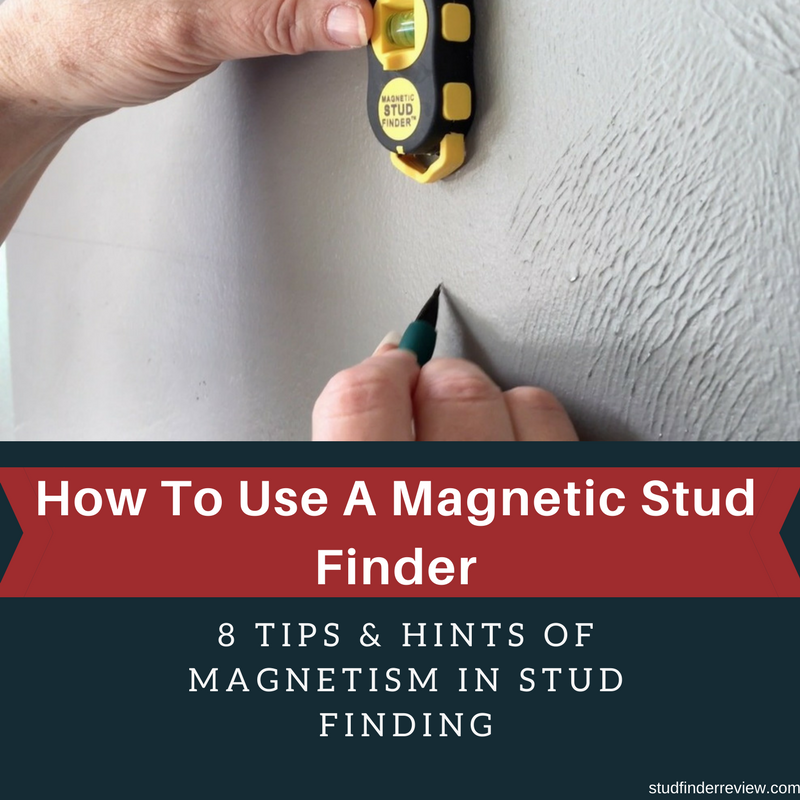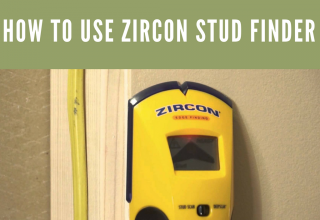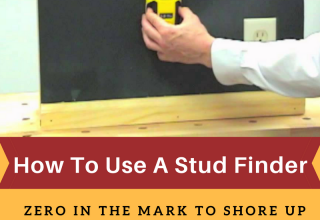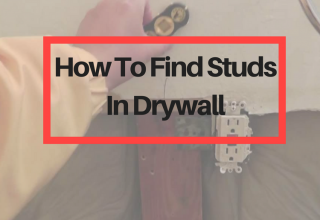Priced way down below preposterously expensive models, magnetic stud finders can help you mark the bull’s eye and hit the spot.

Tooling up your hardware kit with a magnetic stud finder equips you with a hands-on tool to steer clear of potential bodily injuries and property damage. The market offers stationary and moving magnetic stud finders to locate screws in drywall to depict precisely the exact point of targets.
Advanced magnetic stud finders integrate a probing pin to help narrow down the edge of a stud within the wall. Some also have an inbuilt level, notched base and ergonomic design for convenient use. Exposing stronger support studs allows you to mount heavy electronics like TVs sturdily.
8 Things To Consider About How To Use A Magnetic Stud Finder:
1. Magnetic Stud Finders & How they Work
Magnetic stud detectors set the stage for the explosion of other technologies and may not go out of the market soon. They can detect metal in the concrete as the magnet leaps towards it with the tentacles growing stronger as you move it closer to the target.
- Electronic stud finders will hit a snag when hunting for hidden studs and joists beneath plasterboard walling
- Neodymium-equipped magnetic stud finders probe a surface and locate the nails and screws as it’s pulled toward the metal
- The units can hold their weights letting you drill or screw into the layers either directly on top or beneath the magnet in the acoustic clue as you hit the timber joist each time
2. Stationary Magnetic Stud Finders
Stationary magnetic stud sensors run on a small immovable magnet to detect the screws and nails fixed into studs to support the walling structure.
Move the magnet around the surface until you sense the tentacles of electromagnetism as it will pull you toward the target location.
The overall attraction decreases where the metal fasteners lie more deeply in the substructure.
For studs superficially located underneath drywall will come to light with a stationary magnetic stud detector.
Stationary magnetic stud detectors cannot punch through thicker wall materials like lath and plaster. It’s difficult to feel the magnetic forces making other techniques like tapping gently as the key and final tests.
3. Moving Magnetic Stud Sensors
Moving magnetic stud finders utilize a neodymium magnet that’s suspended in a compartment and free to oscillate in response to shrouded metal. The intensity of this exotic earth magnet and its seamless movement allow units to probe a broad array of construction materials. The attraction remains in a position where it remains in a “home” point until it’s moved directly above a metal stud.
- When scanning walls with superficial studs, the magnet leaps towards the wall with the pace that makes a unique thunk sound when it latches onto the wall.
- Given that a moving magnet ditches the need for the user to sense the attraction, you can uncover studs buried more deeply beneath plaster and tile.
- For deeply-located studs, a softer pitch follows the slowed movement of the magnet.
4. Marking & Using A Probing Pin
- Once the unit hits on a screw or nail, imprint a removable mark on the wall directly below.
- You can ascertain the presence of a stud by sliding the magnetic stud sensor up and down to locate a second and third screw beneath the wall.
- Read the manual to expose or adjust the probing pin at-the-ready.
- Begin approximately ½” away from the first pencil indicator and dip the probing pin every ½” until it slips entirely into the wall. Once you complete it, you’ve nailed down one edge of the stud.
- Repeat this process to zero in the other stud edges and the midpoint of the stud.
5. Different Scanning Materials
Magnetic stud finders outclass electronic navigators as they shine through thicker and denser plaster or lath walls as it’s not prone to red herring density changes.
You can home in the studs by detecting nails and screws shoring up the walls.
Works on drywall, sheetrock, plaster, tile, lathe, floors, ceilings and other materials where electronic stud finders fear to tread.
You can find metal studs with a stronger magnetic stud detector regardless of the materials used to erect walls or finish lining such as plasterboards.
Magnetic stud sensors will do the job on freshly painted walls, ceramic and traditional construction designs. You can narrow down metallic studs regardless of moisture, density fluctuations and other sources of false leads.
6. Shortcomings in Using Magnetic Stud Sensors
Will not detect other targets like live AC wire and non-metallic objects.
Lack data sampling and digital displays as well as audiovisual alerts ubiquitous in their electronic rivals.
Do not navigate wall surfaces for edges, the center of the stud, and multiple targets in a single stroke like high-end electronic gadgets.
Cannot detect other types of embedded materials such as unsheathed live AC wiring making any venture risky due to electrocution. If you suspect the presence of electrical components, switch off the outlet before cut into the wall.
No automatic functions, multi-scanning modes, and 3D mapping or viewing. You may require other tools for mounting, remodeling, face-lifting or decorations.
7. Benefits of Using Magnetic Stud Sensors
- Super-strong neodymium magnets offer a perfect fusion of durability, functionality, and cost-efficiency
- Dual neodymium magnets allow you to probe a sprawling area than other models
- Some have a notched base, multi-position level or V-bottomed design that makes marking a breeze
- They require no batteries, recalibration, or subtle positioning to detect targets
- Can home in studs where electronic gadgets fail to hit the broad side of a barn like a lath and plaster walls
- No affected by density changes in walls making them ideal for denser lath and plaster structures
- Easy-picking for budget-conscious do-it-yourselfers as they cost a few bucks while you can wing it with a strong refrigerator magnet
8. Detective Cues & Tips for Magnetic Stud Finders
- Some magnetic stud finders cannot detect targets if the drywall layer exceeds 5/8″
- Standard wood stud size: common 2 x 4” (51 x 102 mm) minimum 1½’’ x 3½’’ (38 x 89 mm)
- You can measure in 16” or 24” increments after finding a stud to locate the next target
- Some houses have different stud spacing rather than 16-inch or 24-inch.
- Use a needle or bent hanger to verify the center of a stud with exactitude
- Find the edges of a stud to pin down the center and mark points with a pencil
Final Verdict
Our how to use a magnetic stud finder guide makes the venture as easy as A, B, C while manufacturers offer wallet-friendly tools. At only a small fortune, you can start narrowing down studs while having a whale of a time as you use your physics to flirt with magnetic tentacles.
As electronic units wrestle with density, magnetic tools hit the high spots by identifying screws or nails in drywall to depict exactly where studs sit.
Besides, top-of-the-line versions boast a probing pin for easier edge-finding, level to attach to the surface for hands-free leveling and subtle base for accurate marking. With thicker plaster and lath, electronic models become all vine and no tater, while magnet stud sensors hit the nail on the head.

















Leave a Reply